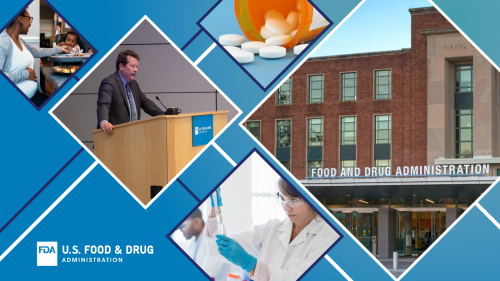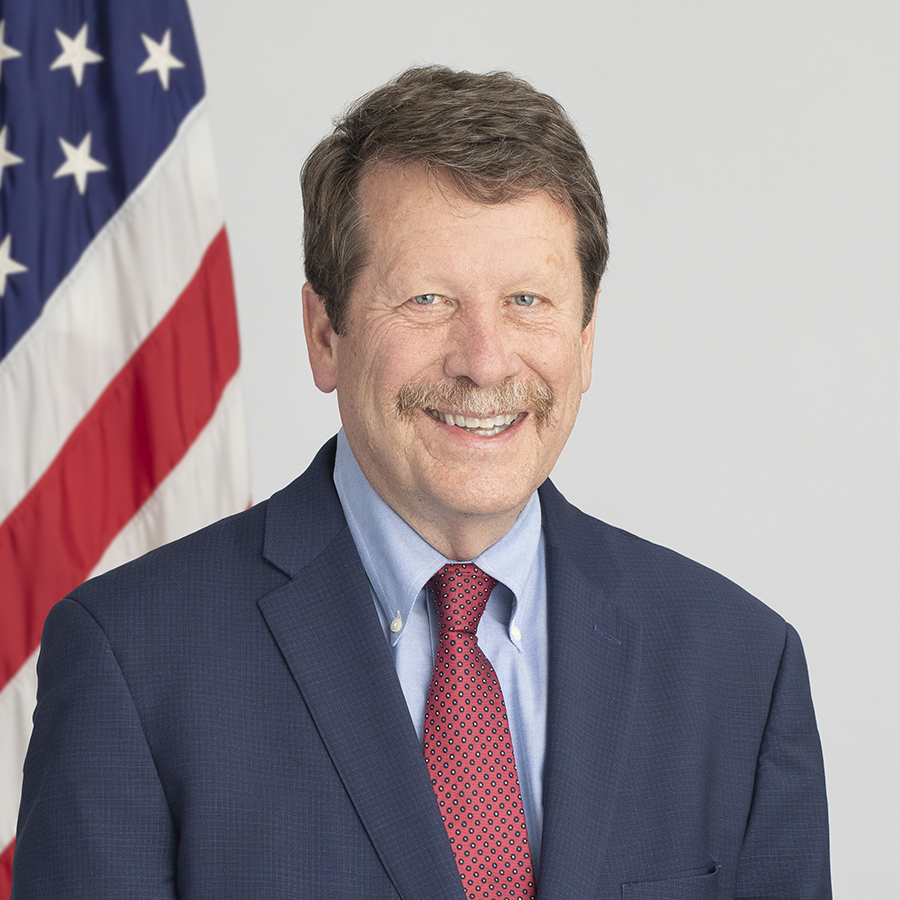The Work of FDA Continues in Thousands of Workstreams that Americans and the World Count on Every Day

This FDA Voices is part two of FDA Commissioner Robert M. Califf's reflection on his one-year anniversary at the agency. Part one, "Highlighting Major Issues Critical to FDA Across Our Diverse Agency After One Year Back," published on Fri., Feb. 17, 2023.
By: Robert M. Califf, M.D., Commissioner of Food and Drugs
Evidence Generation
My career has been devoted to evidence based clinical care—many hours in direct patient care convinced me we needed much better and more plentiful high quality evidence generation to guide our decisions about health. There is now a consensus among many experts that while the early phases of medical product development could be more efficient, the system basically works. But the evidentiary basis for late phase to post-market evaluation needs to be upgraded to take advantage of the dramatically different information landscape. Beginning with a joint project with the U.S. Food and Drug Administration and the National Institutes of Health (NIH) to move towards a standard terminology to describe evidence generation methods, I’m excited about the opportunity to contribute to a new infrastructure that will enable much more high-quality evidence to inform decisions. You’ll hear much more about this during the upcoming year. I’ve asked Dr. Hilary Marston, our Chief Medical Officer, to lead this effort, which will include work across federal agencies and with the broad ecosystem of evidence generation.
Supply Chain
Every industry we regulate is at risk from supply chain issues, deeply embedded in “just in time” methodology and sole sourcing to maximize profit, leading to low inventories, and offshoring of key elements. In the face of international strife and economic distortions, these risks have resulted in real world consequences, for example related to availability of certain drug products and infant formula. The agency has a patchwork of authorities that are helpful, but in no way match the public expectations that for essential products there will be a plentiful supply readily available. Efforts are underway across government to address these challenges, including a role for the FDA and encouraging redundancy throughout the supply chain, but also requiring a broad USG effort and responsibility. Federal partners will have to work on these challenges together. For example, in the case of infant formula supply chain resilience, the FDA, USDA, and other federal partners each have respective roles to play.
Diagnostic Testing
Understanding our risk of illness, the prediction of outcomes given our choices and specific diagnosis of disease together form the bedrock of rational, effective health decisions and healthcare delivery. All of these goals fall under the broad rubric of “diagnostic testing.” A significant part of my career was spent trying to understand how to interpret probabilistic output from diagnostic testing, and while that issue is fascinating, it is predicated upon the assumption that the test is yielding reliable results grounded in fundamental principles of quality test development and production. We will continue to engage Congress on the VALID Act; it’s time to reach societal agreement on a modern framework that supports the amazing new ability to assess health and disease using diagnostic tests, but also assures Americans that the test results are reliable and developed in a manner that leads to better decisions.
Dietary Supplements
Along with VALID, I hope to see an improved framework to appropriately regulate dietary supplements during my tenure. This enormous industry continues to grow and it’s now part of everyday life for many families. Dietary supplements should be required to list with the FDA and companies should be accountable for revealing what is in the supplement being sold. In the long run we will have more information about the benefits and risks of dietary supplements as our methods of evidence generation improve, and I hope for a regulatory regime that can encourage better information for consumers to be informed about their choices. Although it will take some time to achieve the optimal regulatory framework, given the size and impact of the industry, we need to constantly update our internal approach and build awareness.
FDA Advisory Committees
As a former long-term advisory committee member, I believe strongly in the value of interchange between our experts at the FDA and experts who work outside the agency. It not only makes our decisions better, but it also adds an element of transparency and societal discussion that is important. My observation is that the agency needs to tune up our advisory committee system in a way that enables our experts to get the best advice possible. I’ve been using the analogy that it’s like democracy—messy, but hard to imagine a better way of achieving our goals.
Chronic Diseases, Including Mental Health
As we experience an unprecedented reversal of previous progress in chronic diseases, including mental health, leading to an unprecedented decline in life expectancy (along with COVID-19 and overdose), we are reviewing what we can do to help the industries we regulate to be more successful in developing therapies in these areas. The dramatic improvement in cancer and rare disease therapies and the COVID response shows that if we’re strategic, we can move disease outcomes in a positive direction. Recognizing fully the importance of social determinants of health and health system priorities, I want to explore all that we can do within our sphere of direct influence to reverse these negative trends. And I believe that particularly at the interface of our interactions with the Centers for Medicare and Medicaid Services (CMS), much could be gained by a more effective handoff between our accountability for “safe and effective” and CMS’s accountability for “reasonable and necessary.”
Interagency Collaboration
My experience is that federal agencies do an excellent job within their “swim lanes,” but much public benefit is lost when interagency collaboration is suboptimal and opportunities “fall between the cracks.” Examples of critical interagency handoffs where I intend to continue to work closely with my counterparts include vaccine evaluation by the FDA and practice recommendations by the Centers for Disease Control and Prevention (CDC), approval for marketing by the FDA and payment by the CMS and the need for research gaps to be filled in for the FDA to make decisions and the NIH’s massive research capability. Recent interactions with regard to genomic alterations in plants and animals have focused attention on FDA-U.S. Department of Agriculture (USDA) interactions. The FDA and USDA each have unique expertise and missions that can be complimentary and synergistic when it comes to nutrition, food safety, the resilience of food supply chains, and innovation.
Data Science and Statistics
As we develop much better systems of evidence generation, data science and statistics form the bedrock of generating evidence from data and information. The FDA has a talented and influential group of quantitative experts, but to regulate the information-rich, digital world of the future we need to make it a conscious focus. An effective organization for knowledge sharing and professional advancement is needed across the multiple professional disciplines with a role in quantitative analysis, data management and computer science. The emergence of ChatGPT and its competitors is a reminder that we must stay a step ahead of the industry—how long before we have “AI assisted” applications submitted to the FDA?
Genome Modification
In 2015/16 it was clear to me that modification of the genome would be a major technology. There is broad agreement that across the spectrum of human beings, animals and plants, genome modification is here to stay and that its benefits could be profound for human disease and could provide much more environment-friendly and predictable food in the face of climate change and supply chain stresses. User fees are funding a major workforce investment in the Center for Biologics Evaluation and Research, while the Human Foods Program and the Center for Veterinary Medicine will emphasize genomic alteration as key technologies for the future. I’ve asked Dr. Namandjé Bumpus, our Chief Scientist, to pull together our experts across the enterprise to make sure we’re sharing knowledge in a way that reinforces regulation that supports innovation, enabling the benefit and preventing avoidable risk as the science continues to grow.
Substance Use Disorder and Associated Overdose Deaths
Preventing and reducing substance use disorders and overdose deaths remains an area of major focus. We continue to take actions in response to the four priorities outlined in FDA’s Overdose Prevention Framework, including primary prevention, encouraging harm reduction, advancing evidence-based treatments, and protecting the public from unapproved, diverted, or counterfeit drugs. With opioid-related deaths at an all-time high, the FDA is doing all it can to ensure live-saving naloxone is more accessible. In response to recommendations by an independent evaluation of our opioid activities by experts affiliated with the Ohio State University, the FDA is focusing on evidence generation for long term use and clinical trial designs, as well as considering additional authorities needed.
Cannabis and Its More Than 30 Derivatives
And, we are addressing cannabis and its more than 30 derivatives by seeking a new regulatory pathway that can provide access, safeguards, protection and oversight in ways that existing pathways cannot. I’m grateful to Dr. Woodcock that she has taken on this issue, developing novel approaches to regulation in the face of controversy that has caused others to shy away and “kick the can down the road.”
In addition to all of the topics covered in these two articles, the essential work of the agency continues in thousands of workstreams that Americans and the world count on every day. I look forward to doing all I can to improve the working conditions of the agency’s staff and the legal and operational framework that defines our mission. I also want to recognize the enormous work in progress on the response to the Reagan Udall reports on the Human Foods Program and the Center for Tobacco Products, and in the building of a more effective enterprise-wide information technology approach.
Finally, I want to thank all of our staff for their hard work in such an extraordinary time, and especially my staff in the Commissioner’s Office for their “around the clock” perseverance, good work and tolerance for my passions. I look forward to a productive and engaging year in which the agency thrives.

